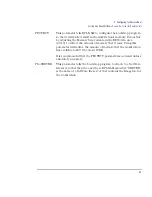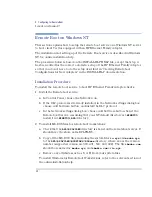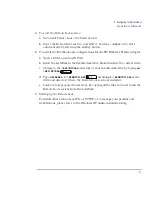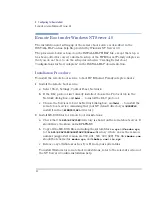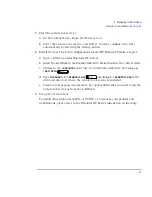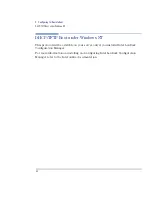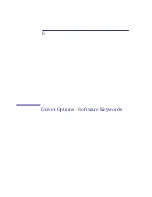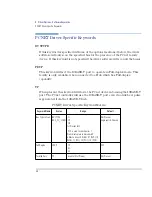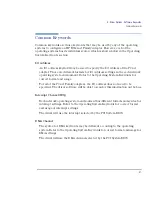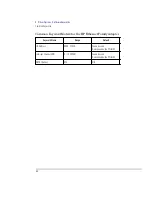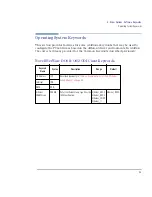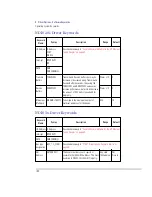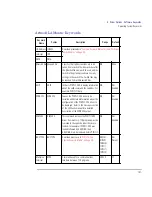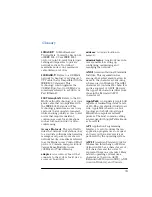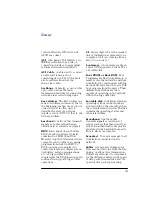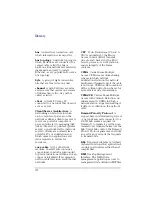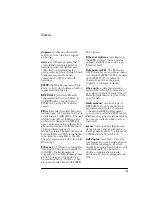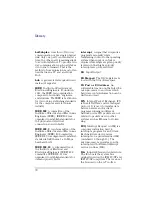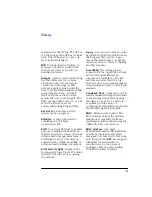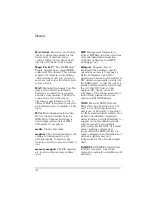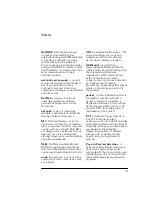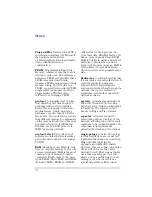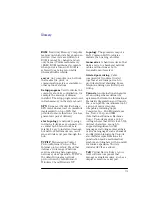
English
103
Glossary
10BASE-T
10-Mbs Baseband
Twisted Pair. Covered by Section 14
of IEEE 802.3. Uses IEEE 802.3
protocol, point-to-point twisted pair
cabling and repeaters to provide
network services. No defined
maximum node count, maximum
cable distance is 100 m.
100BASE-T
Refers to a 100Mbit/s
network technology over Category 5
UTP cable that is compatible with the
IEEE 802.3 standard. This
technology, which upgrades the
CSMA/CD protocol to 100Mbit/s, is
sometimes referred to as 802.3u or
Fast Ethernet.
100VG-AnyLAN
Refers to the 100
Mbit/s network technology over voice
grade cable that is compatible with
the IEEE 802.12 standard. This
technology guarantees access to any
end node that requests to transmit,
while ensuring priority access to end
nodes that require consistent,
continuous access for applications
such as full-motion video or video
conferencing.
Access Protocol
The set of traffic
rules that network workstations obey
to avoid data collisions when sending
messages and packets over shared
network media - sometimes referred
to as the Media Access Control (MAC)
protocol. Common examples include
Carrier Sense Multiple Access
(CSMA) and Token Passing.
adapter
An accessory board, that
connects to the system board via an
accessory board slot.
address
A unique location in
memory.
administrator
A network user who
is responsible for setting up,
configuring, maintaining, and
managing the network.
ANSI
American National Standards
Institute. This organization has,
among other achievements, given its
name to the character set encoding
scheme used in Windows. The ANSI
character set contains 256 characters
and is a superset of ASCII. However,
the upper 128 characters differ from
those in the Extended ASCII
character set.
AppleTalk
A proprietary Apple LAN
capable of transmitting data at a rate
of 230-Kbs over shielded twisted pair
wire. AppleTalk is based on a bus
topology and is built into all Apple
Macintosh computers and laser
printers. The most common cabling
scheme used with AppleTalk is known
as LocalTalk.
API
Application Programming
Interface. A set of routines that an
application program uses to request
and carry out lower-level services
performed by the operating system.
ASCII
American Standard Code for
Information Interchange. ASCII was
defined in 1965 as a character set of
128 characters and the codes to
represent them on a computer. Many
modern operating systems use a
character set based on ASCII.
Extended ASCII (used in DOS), ANSI
(used in Windows), and Unicode
Summary of Contents for Vectra VL6 7
Page 1: ...Network Administrator Guide Online Guide Rev 5 0 Date 8 97 ...
Page 9: ...1 Setting Up the Network Connection ...
Page 19: ...2 Installing Novell NetWare Drivers ...
Page 42: ...2 Installing Novell NetWare Drivers NET CFG Options for Novell NetWare 42 English ...
Page 43: ...3 Installing Microsoft Network Drivers ...
Page 56: ...3 Installing Microsoft Network Drivers NDIS 2 01 and 3 1 for Windows 95 56 English ...
Page 57: ...4 Installing Other Network Drivers ...
Page 76: ...4 Installing Other Network Drivers NDIS 2 01 Driver with Other Networking Products 76 English ...
Page 77: ...5 Configuring for Remote Boot ...
Page 95: ...6 Driver Options Software Keywords ...
Page 102: ...6 Driver Options Software Keywords Operating System Keywords 102 English ...

